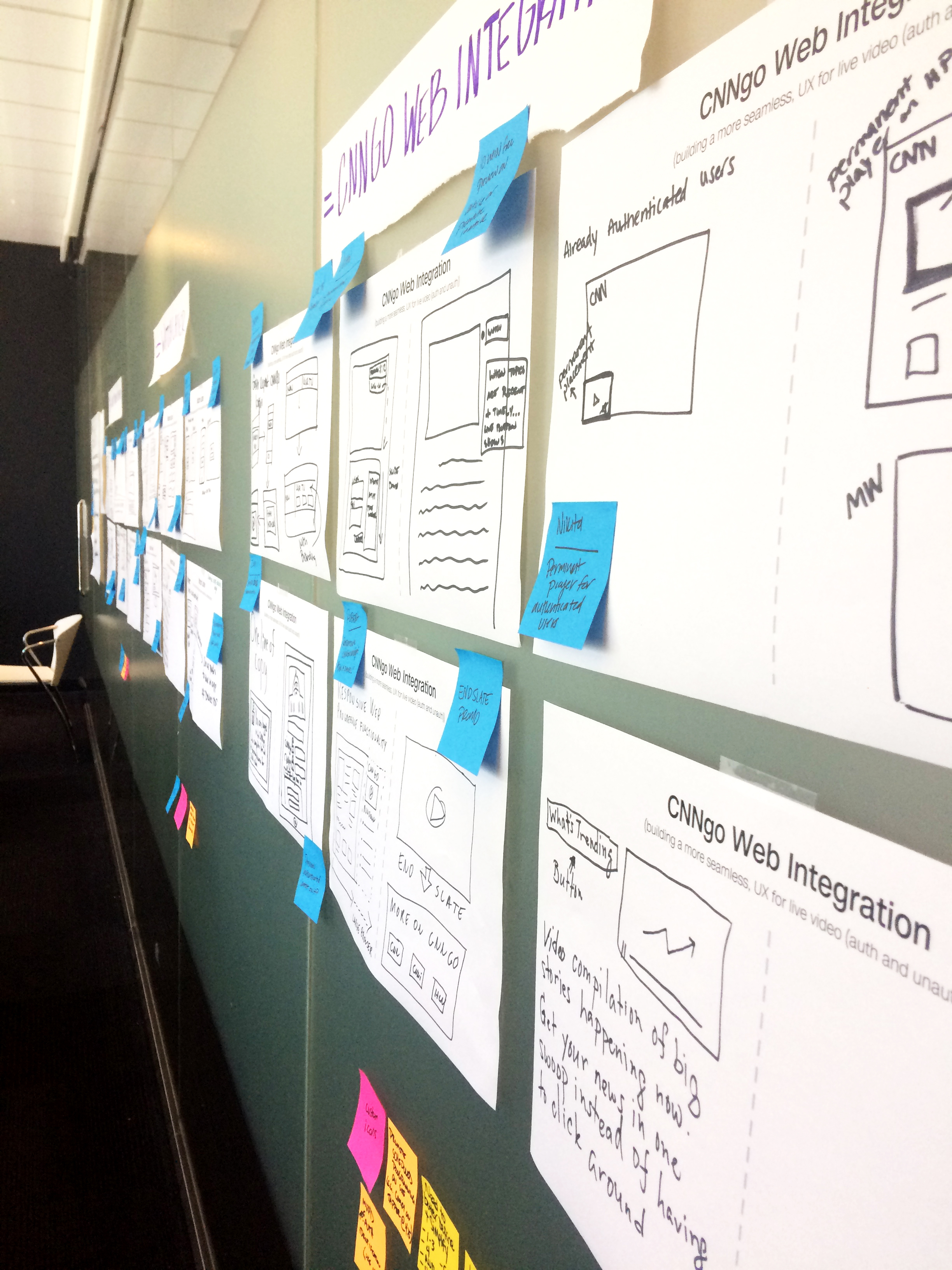ONE TAP TO PLAY
Users of CNN.com struggled to easily watch videos on both the homepage and section fronts. The original experience forced users to tap three times and visit two pages to start a video. One Tap to Play (OTTP) was a feature enhancement for CNN's mobile web video product that removed the friction within this experience.
Goal
Allow users to start playing videos from the mobile CNN.com homepage with just one click.
Contributions
Information architecture
Wireframes
Visual design
Prototyping
Overview
Phased approach for implementation
Phase 1: launch video with native player
Phase 2: launch video with new inline player
Phase 3: introduce recirculation module
Leveraged existing player controls for larger alignment with non-mobile CNN video products
Results
Phase 1: 13% increase in video starts
Phase 2: 6% increase in video starts
Phase 3: 3% increase in video starts
Research
Video is a major driver for CNN.com traffic and an expectation of our users, so all video teams look to find new ways to increase engagement. The idea for this project started with a simple question: how do we improve the video experience on CNN.com's mobile site?
To answer this question our partners in UX Research hosted a design studio, gathering members of the cross functional team (product, design, dev, QA, editorial, research, biz dev) to ideate on potential solutions. This is how we developed Phase 1 of OTTP and the subsequent releases for the improved web video player.
User Flows
With the design studio complete and features prioritized, I started to outline the project's high level impact. We used this documentation as one tool to communicate the plan for this product enhancement to our stakeholders. As seen in this example, there was a drastic reduction in the amount wait time to start a video.
Design
After analyzing the high-level user flow and the ideas from the discovery phase, we formulated a plan for the design and implementation. I developed an experience that highlighted the simplified user flow and feature enhancements to the video player. The existing player functionality was used whenever possible to mirror the experience in other areas of the mobile site. However, newer functional pieces went through several design iterations and testing before selecting the final option.
Implementation
For implementation, we decided to use a three phased approach. This helped us deliver value faster and better measure increases/decreases in video consumption.
Phase 1: functionality-only release. Launch device's native play when tapping on a video link.
Phase 2: custom THEOplayer release (inline player). Launch design updates with the faster video player technology.
Phase 3: video recirculation release. Launch new end slate, countdown timer and module
Results
The hypothesis our team had at the start of the project proved to be true. As we released each phase of the mobile web video update, we were able to deliver value to the users, which was shown in the increases to video starts.
Phase 1: 13% increase in video starts
Phase 2: 6% increase in video starts
Phase 3: 3% increase in video starts
Team
Design: Will Linto
Product: Nikita Thareja
Dev: Hamish Hamilton, Subi Babu, Levvel (agency)









